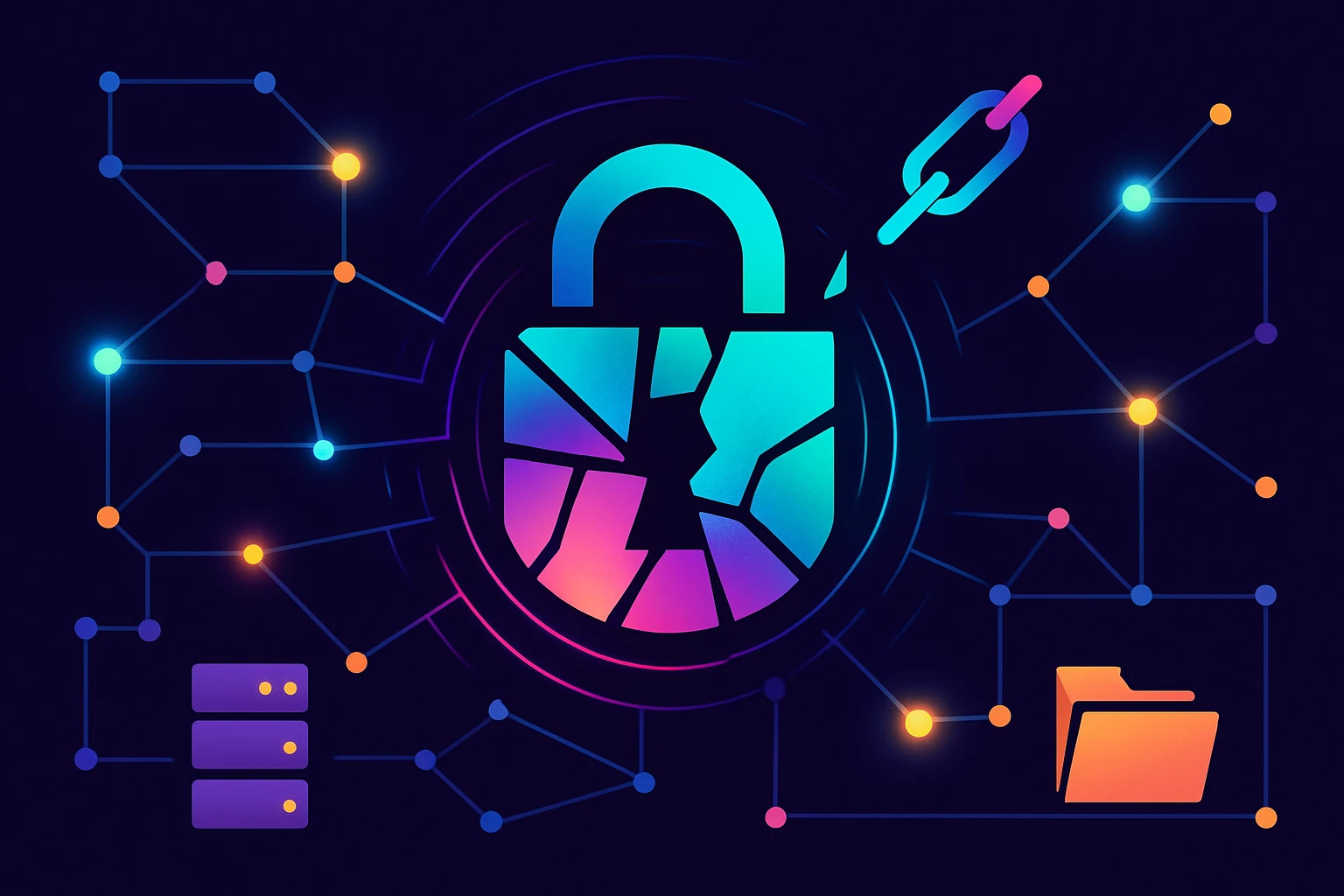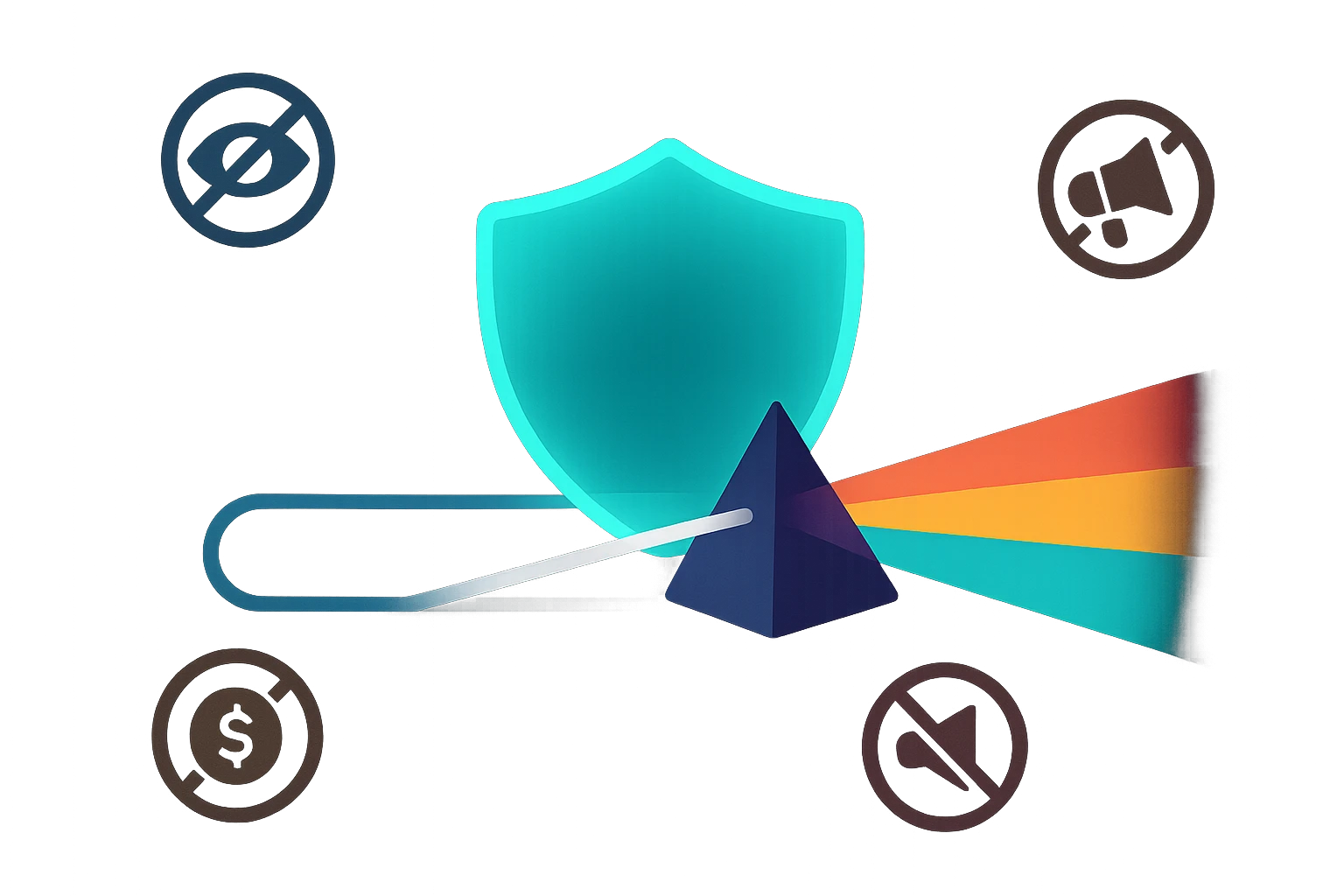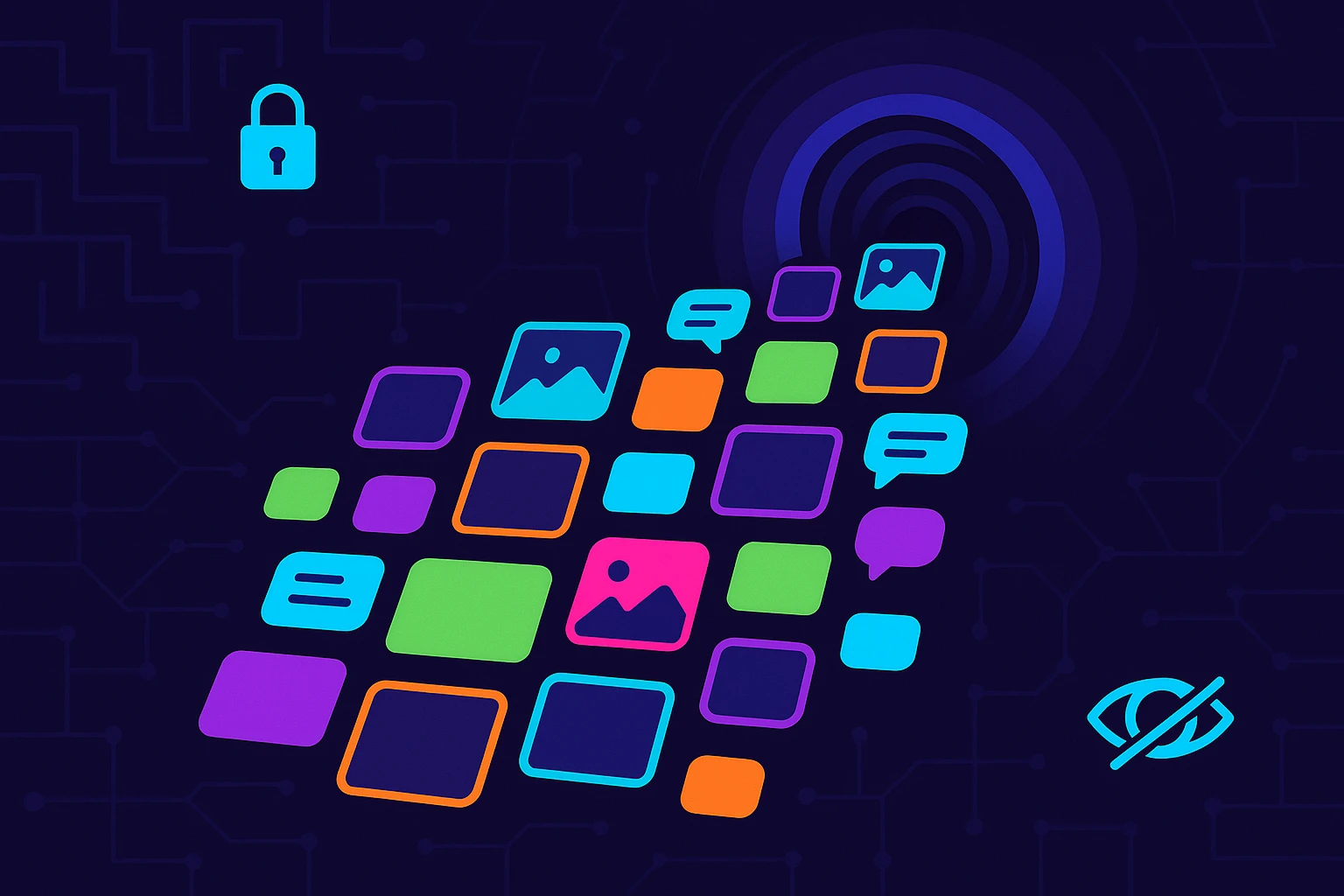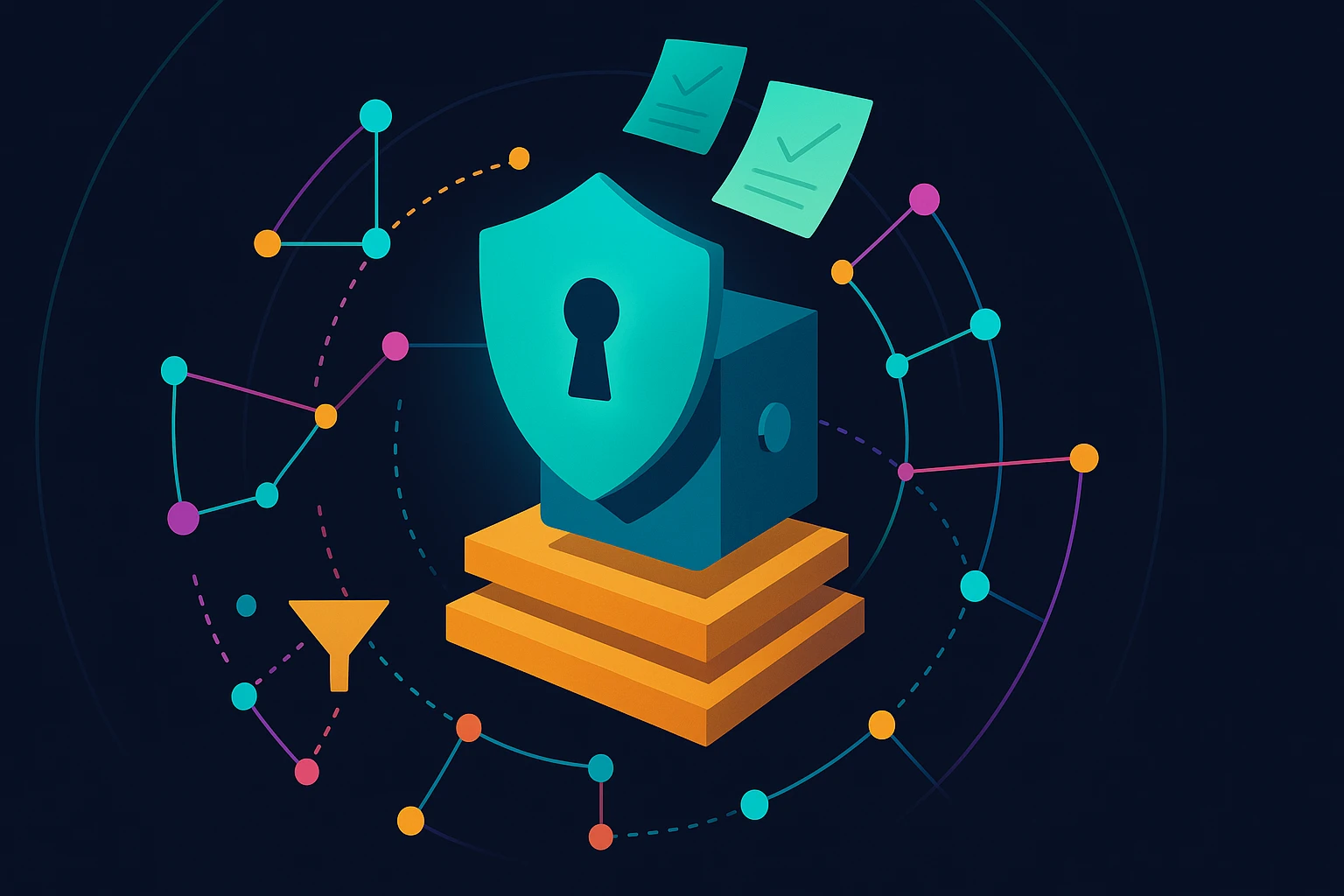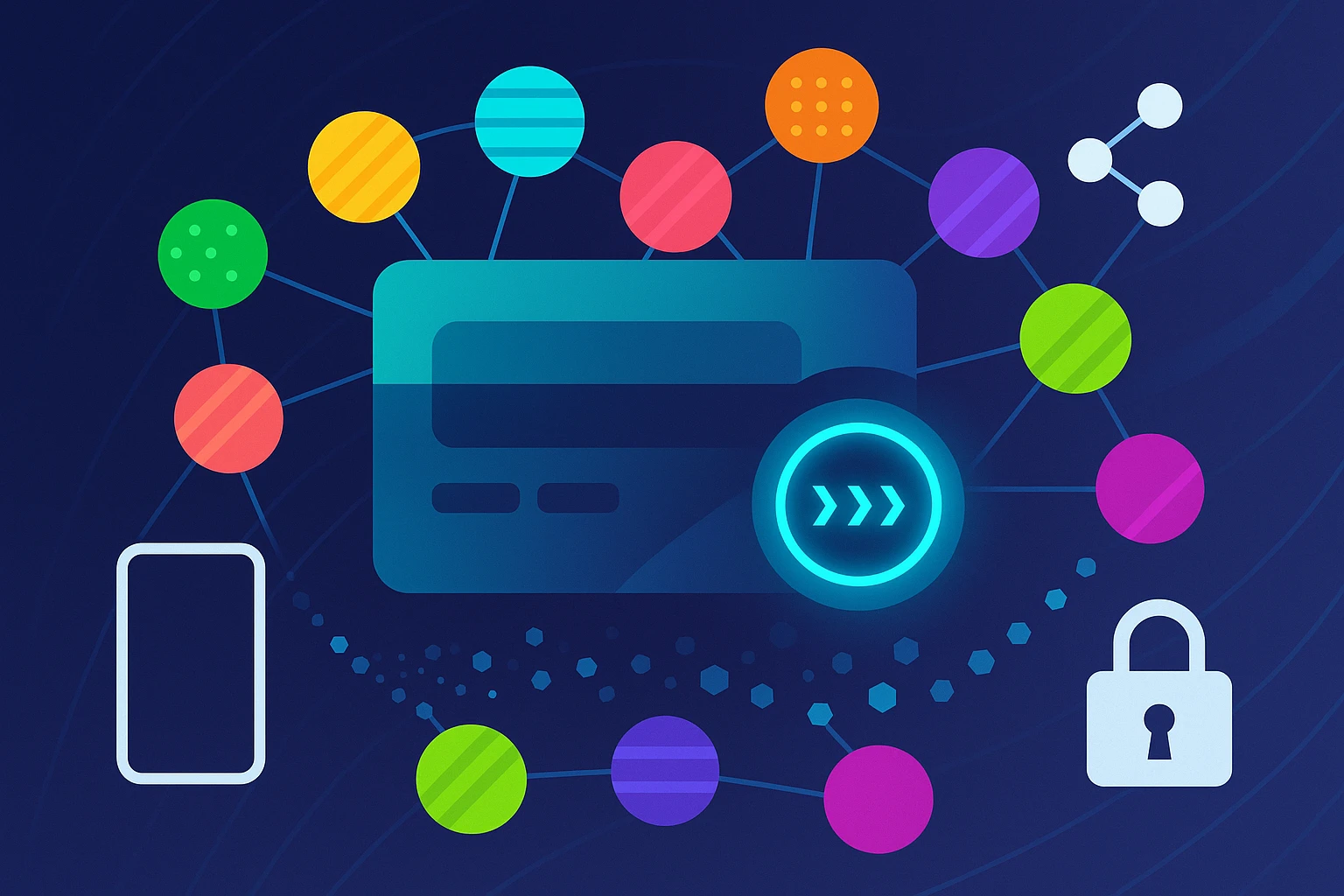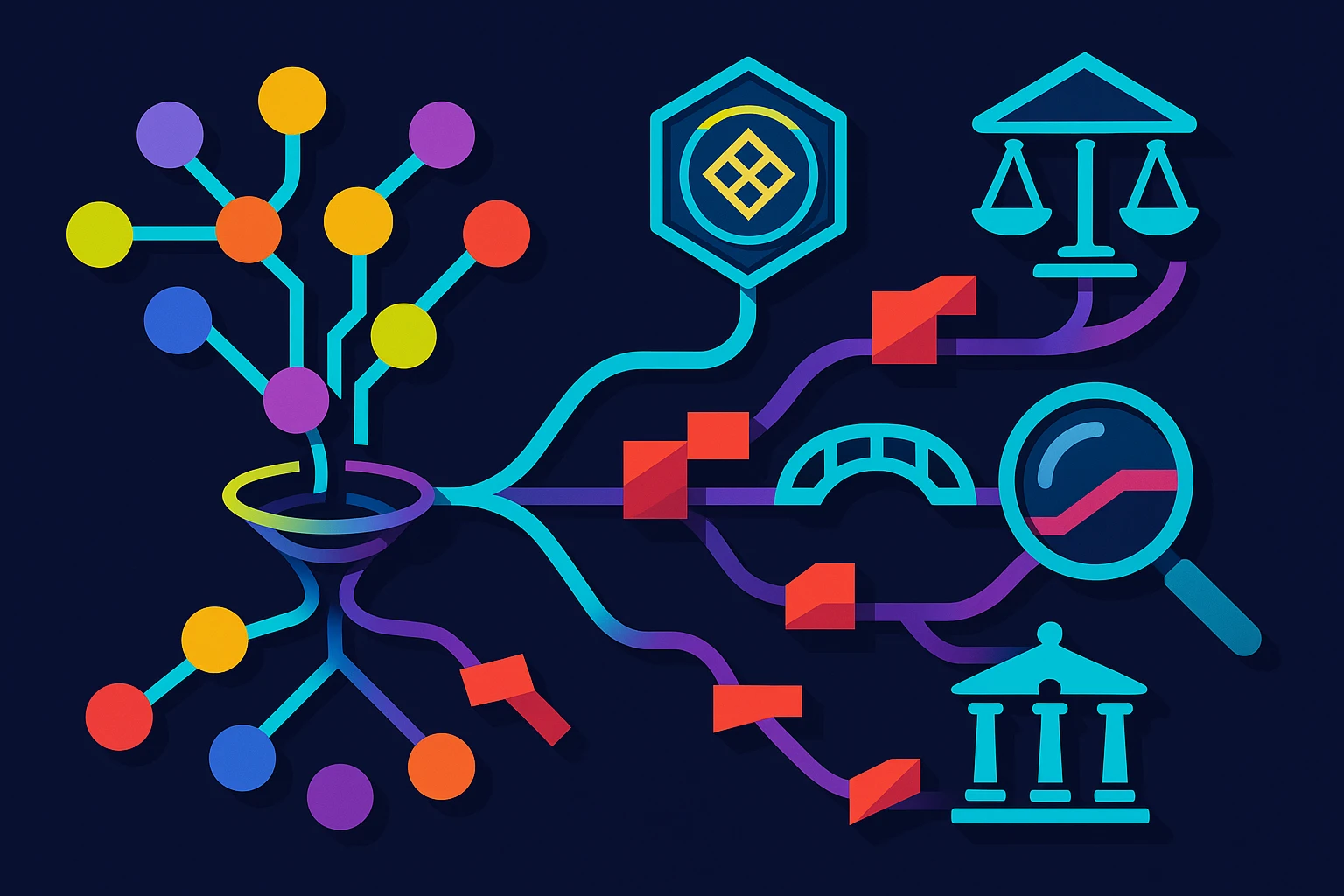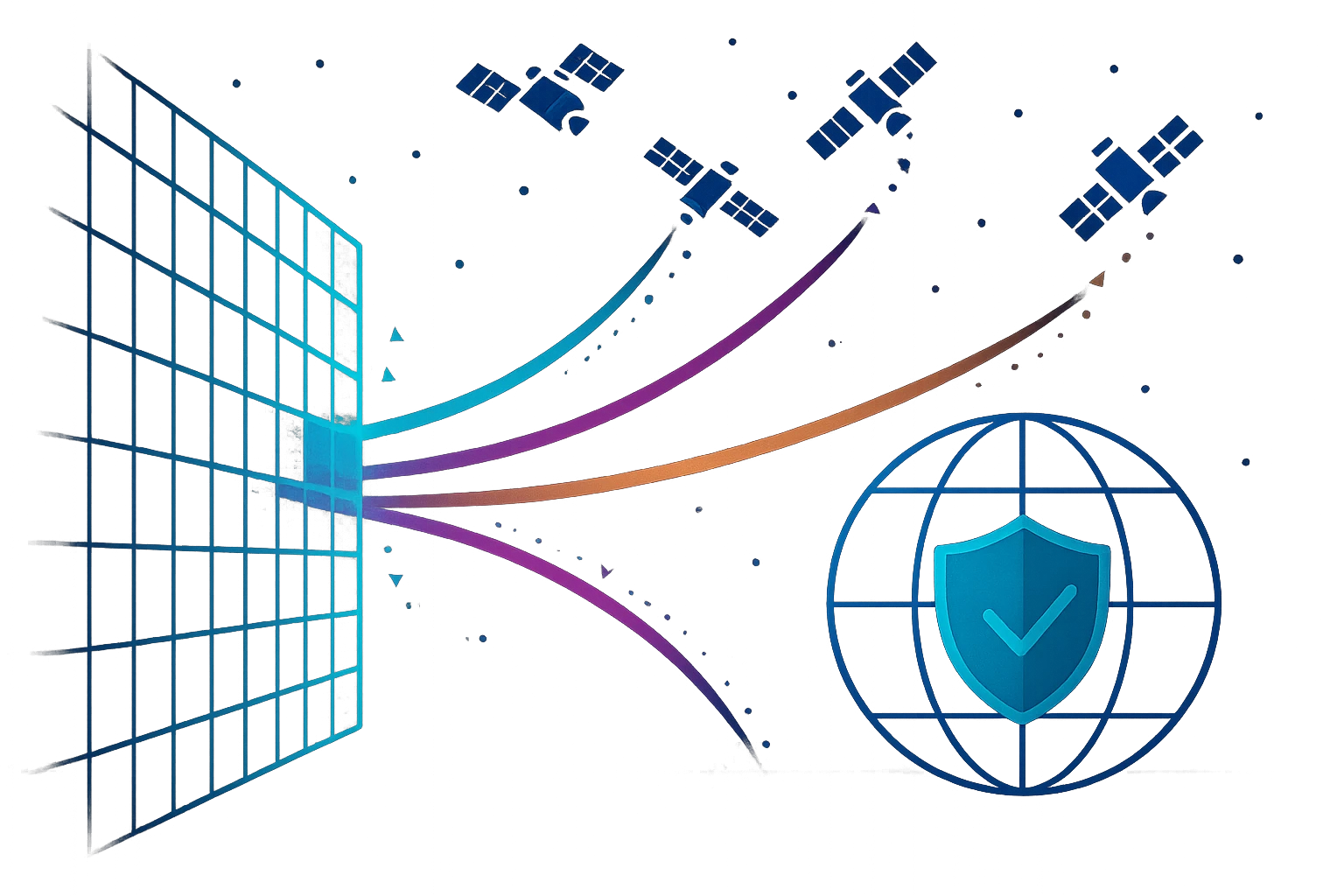Last Updated on May 14, 2025 by DarkNet
In today’s rapidly evolving cybersecurity landscape, one threat model has surged dramatically in prominence: Ransomware-as-a-Service (RaaS). RaaS is a criminal enterprise model in which skilled cybercriminals develop ransomware software and lease or sell access to less technically savvy attackers. This model significantly lowers the barrier to entry, enabling virtually anyone with malicious intent—and minimal technical know-how—to launch sophisticated ransomware attacks against businesses, government institutions, and individuals.
By 2025, RaaS has transformed into one of the most pervasive cybersecurity threats on the dark web. Its growth has been driven by increasingly streamlined platforms, sophisticated encryption methods, and lucrative financial incentives for attackers. Moreover, recent technological advancements, particularly in artificial intelligence and automation, have amplified the frequency, efficiency, and impact of these attacks.
Understanding the nature and dynamics of RaaS is crucial for cybersecurity professionals, businesses, and private citizens alike. The financial losses, operational disruptions, and breaches of sensitive data resulting from ransomware attacks underscore the need for continuous vigilance, proactive defense strategies, and informed decision-making. In this article, we examine current trends, detailed statistics, and essential insights about RaaS, aiming to equip readers with the knowledge required to recognize, prevent, and effectively respond to this evolving cyber threat.
How Does Ransomware-as-a-Service Work?
Ransomware-as-a-Service (RaaS) operates similarly to legitimate software-as-a-service business models, but with a criminal twist. In this illicit arrangement, sophisticated ransomware developers—known as operators—create and manage malicious software tools and infrastructure. These operators then lease their ransomware platforms to less technically adept criminals, termed affiliates, who carry out the actual attacks. Profits derived from successful ransom payments are typically shared between the operator and the affiliate based on predetermined agreements, often involving percentages that incentivize repeated attacks.
Key Participants in RaaS Attacks:
- Operators: Skilled cybercriminals who build, maintain, and regularly update ransomware tools. They manage technical infrastructure and provide technical support, such as decryption keys and communication channels.
- Affiliates: Criminal partners or clients who conduct ransomware attacks using tools provided by operators. Affiliates select targets, initiate attacks, and manage victim interactions, usually without needing extensive technical expertise.
- Victims: Individuals, businesses, or organizations targeted by ransomware. Victims face encrypted data, operational disruptions, financial losses, reputational damage, and privacy breaches.
Typical Lifecycle of a RaaS Attack:
- Recruitment and Setup:
Affiliates purchase access to ransomware tools via dark-web marketplaces, often paying subscription fees or agreeing to share a percentage of any ransom payments collected. - Target Identification and Attack Initiation:
Affiliates identify vulnerable targets—often exploiting weaknesses like outdated software, compromised credentials, or poor cybersecurity practices—and deploy the ransomware to encrypt critical files and systems. - Encryption and Extortion:
Once infected, victim systems become inaccessible. Attackers demand a ransom, typically in cryptocurrency, in exchange for providing a decryption key. Affiliates may further pressure victims by threatening to publicly release sensitive data, a tactic known as “double extortion.” - Negotiation and Payment:
Victims may enter negotiations via anonymous channels provided by the attackers. Upon payment, usually in Bitcoin or another cryptocurrency, attackers provide decryption keys—though not always reliably. - Profit Distribution:
Operators and affiliates split the ransom according to agreed terms. Operators often receive between 20% to 40% of each ransom payment, with affiliates taking the remainder.
By clearly understanding the RaaS business model and its operational steps, organizations and individuals can better appreciate the significance of proactive cybersecurity measures needed to prevent becoming the next victim.
Latest Trends in RaaS on the Dark Web in 2025
By 2025, Ransomware-as-a-Service (RaaS) has evolved into one of the most sophisticated and profitable cybercrime models on the dark web, marked by a significant expansion in both scale and complexity. Several key trends have emerged, reshaping how cybercriminals leverage ransomware to target organizations and individuals alike.
Rapid Growth of RaaS Platforms
The number of RaaS platforms available on the dark web has increased dramatically, driven by high demand and lucrative earnings potential. As barriers to entry diminish, cybercriminal groups have diversified their services, offering tailored ransomware packages to affiliates of varying expertise levels. This proliferation has resulted in a crowded marketplace, with dozens of competing platforms actively advertising their services and tools. Consequently, attacks have surged, intensifying competition among cybercriminals and pushing innovation forward.
Increasingly Sophisticated Attack Methods
Ransomware attacks have become notably more complex, embracing methods beyond simple encryption:
- Double Extortion:
This method, now standard among RaaS operators, involves encrypting victims’ data and simultaneously stealing sensitive information. Attackers then threaten public disclosure unless the ransom is paid, significantly raising the stakes and pressure on the victim. - Triple Extortion:
A newer variation, triple extortion expands threats beyond encryption and data leaks to include targeted denial-of-service (DDoS) attacks, further disrupting victim operations until ransom demands are satisfied. - Targeted Ransomware:
Instead of indiscriminate attacks, cybercriminals increasingly focus on high-value targets such as hospitals, financial institutions, critical infrastructure, and large corporations, anticipating substantial ransom payments.
Leveraging Technological Innovations
Cutting-edge technologies, particularly artificial intelligence (AI) and automated tools, have significantly enhanced the efficiency and effectiveness of RaaS attacks:
- Artificial Intelligence:
AI-powered tools have enabled attackers to swiftly identify vulnerabilities, optimize attack vectors, and conduct more effective spear-phishing campaigns. Additionally, AI-driven chatbots have streamlined ransom negotiations, enabling attackers to handle multiple simultaneous extortion efforts with minimal manual oversight. - Attack Automation:
Automated ransomware deployment has become commonplace, significantly reducing the time between target identification and successful attack execution. Automation has also allowed affiliates with limited technical knowledge to launch highly impactful attacks at scale. - Evasion and Obfuscation Techniques:
Cybercriminals are increasingly employing advanced techniques to evade detection, such as polymorphic malware that changes its signature dynamically, machine learning-driven anomaly detection evasion, and blockchain-based payment systems designed to obscure transactions.
In summary, the rapid expansion and evolving sophistication of RaaS platforms in 2025 represent a formidable challenge for global cybersecurity. As cybercriminals become increasingly adaptive and technically adept, organizations and security professionals must remain vigilant, continuously updating their defensive strategies to keep pace with these emerging threats.
RaaS Market Statistics and Analytics (2025)
In 2025, the global impact of Ransomware-as-a-Service (RaaS) has reached unprecedented levels, presenting serious threats to businesses, governments, and individuals worldwide. Precise market statistics offer a clear view of the scale and nature of these attacks, highlighting the financial losses, ransom payment trends, and the regions and industries most affected.
Financial Scale and Losses from RaaS Attacks
By the end of 2025, global financial losses directly attributable to RaaS attacks are projected to exceed $40 billion, reflecting a sharp increase from approximately $20 billion reported in 2021. These figures account for ransom payments, recovery and remediation expenses, operational downtime, and long-term reputational damage.
The increase in financial losses correlates closely with the rising frequency and sophistication of attacks, compounded by more aggressive tactics like double and triple extortion. On average, organizations reported recovery costs that were nearly 10 times higher than the ransom itself, illustrating that direct payments represent just a fraction of the true financial damage inflicted by ransomware incidents.
Average Ransom Amounts and Trends
In 2025, the average ransom payment demanded by cybercriminals has surged significantly, driven by the targeting of high-value entities and sensitive infrastructure:
- Average ransom demanded: Approximately $1.8 million, up dramatically from $500,000 in 2021.
- Median ransom payment: Approximately $750,000, showing an increase from around $200,000 four years earlier.
Notably, ransomware operators have shifted toward targeting larger enterprises and critical infrastructures, anticipating higher payouts. Moreover, approximately 75% of ransomware incidents in 2025 included threats of public data disclosure, significantly increasing the pressure to pay the ransom promptly.
Most Affected Regions
While ransomware remains a global threat, certain regions continue to bear a disproportionate share of the damage:
- North America:
The United States and Canada remain prime targets, representing around 45% of all global ransomware attacks, largely due to their economic strength, extensive digitization, and willingness to pay substantial ransoms. - Europe:
Western European nations collectively account for approximately 30% of attacks, with critical infrastructure, financial services, and healthcare industries being particularly vulnerable. - Asia-Pacific:
This region experienced rapid growth in ransomware attacks, accounting for approximately 20% of global incidents. Emerging economies and digitization drives have made these nations increasingly attractive targets for ransomware operators.
Industries Most Vulnerable to RaaS
RaaS operators have consistently targeted specific industries based on their critical importance and potential vulnerability:
- Healthcare:
Attacks on hospitals and healthcare facilities have surged, representing 28% of total ransomware incidents in 2025, due to the urgent nature of medical services and sensitive patient data. - Financial Services:
Banks and financial institutions account for roughly 22% of ransomware cases, reflecting their high-value transactional data and significant financial resources. - Government and Public Sector:
Government agencies experienced approximately 17% of attacks, driven by the vulnerability of public services and critical infrastructure. - Education and Research Institutions:
Educational and academic organizations represent approximately 15% of ransomware attacks, exploiting typically lower cybersecurity maturity and sensitive student data. - Manufacturing and Supply Chains:
This industry accounts for approximately 12% of cases, particularly targeted due to the potential for large-scale operational disruptions and subsequent pressure to quickly resolve attacks.
In conclusion, these statistics underscore the rapidly expanding threat posed by RaaS in 2025, demonstrating the critical need for enhanced cybersecurity strategies, proactive risk assessments, and robust defensive measures across all sectors and regions.
Examples of Prominent RaaS Platforms on the Dark Web
By 2025, several Ransomware-as-a-Service (RaaS) platforms have emerged as dominant threats within the dark-web ecosystem, combining advanced technical capabilities with aggressive monetization strategies. The following are three of the most notable and widely recognized RaaS platforms operating today, each demonstrating unique methodologies, expansive scale, and significant real-world impact.
1. Black Hydra
Methods:
Black Hydra is widely regarded as one of the most technically sophisticated and aggressive ransomware platforms. It employs a hybrid encryption method combining AES-256 and RSA-4096 algorithms, making decryption without a key nearly impossible. The platform specializes in double extortion attacks, routinely threatening victims with the publication of stolen data if demands are not swiftly met.
Scale:
Operating globally, Black Hydra claims an extensive affiliate network with hundreds of active participants, generating substantial revenue through targeted attacks on Fortune 500 companies, healthcare facilities, and government entities.
Notable Attacks:
In early 2025, Black Hydra famously compromised the networks of a major U.S.-based pharmaceutical corporation, encrypting sensitive intellectual property and patient data. The attackers demanded a ransom of $5 million, and ultimately secured a payment of approximately $2.8 million following protracted negotiations.
2. ShadowPulse
Methods:
ShadowPulse sets itself apart with a heavy emphasis on automation and artificial intelligence. Utilizing advanced machine learning algorithms, ShadowPulse affiliates can rapidly identify and exploit vulnerabilities, significantly shortening attack timeframes. The platform also employs triple extortion tactics, adding distributed denial-of-service (DDoS) attacks to its data leak threats, intensifying pressure on victims.
Scale:
ShadowPulse supports a rapidly growing affiliate community numbering in the thousands, largely due to its highly automated interface, which requires minimal technical skills for operation. The platform’s sheer volume of attacks has made it one of the largest RaaS providers in terms of operational scope.
Notable Attacks:
In mid-2025, ShadowPulse conducted a widespread ransomware campaign against several European banks simultaneously. By coordinating DDoS disruptions with ransomware encryption, attackers successfully secured multiple ransom payments totaling over €7 million, while causing extensive operational disruptions across the banking sector.
3. Cryptonite
Methods:
Cryptonite’s hallmark is its highly targeted, strategic approach, often referred to as “big-game hunting.” Rather than large-scale indiscriminate attacks, Cryptonite affiliates meticulously select high-value corporate and government targets. The platform integrates blockchain technology for anonymous ransom payments, leveraging privacy-focused cryptocurrencies to evade detection.
Scale:
Cryptonite maintains a smaller yet highly specialized affiliate network. This selective strategy has allowed the platform to focus on fewer but more lucrative attacks, significantly raising average ransom demands and payouts.
Notable Attacks:
One of Cryptonite’s most prominent 2025 incidents involved a sophisticated attack on a leading multinational energy corporation. The attack encrypted critical infrastructure data and threatened prolonged disruption of operations. Following extensive negotiations mediated through blockchain-secured communications, the corporation eventually paid an $8 million ransom to restore its operations swiftly.
These examples illustrate how RaaS platforms have evolved into highly specialized, innovative threats that require equally sophisticated responses from cybersecurity teams worldwide. Understanding their methods, scale, and specific attack examples can help organizations better prepare for and mitigate these increasingly dangerous cyber threats.
Measures to Combat and Counter RaaS
Effectively combating Ransomware-as-a-Service (RaaS) requires coordinated action across multiple fronts, including law enforcement initiatives, robust cybersecurity strategies by businesses and individuals, and collaborative public-private partnerships.
Law Enforcement Actions and Successful Operations
Law enforcement agencies worldwide have ramped up their efforts to dismantle RaaS operations. High-profile collaborative operations—often involving agencies like the FBI, Europol, and Interpol—have resulted in substantial disruptions of cybercriminal infrastructure. For example, the international operation “Operation Dark Shroud” in early 2025 successfully dismantled the infamous “ShadowPulse” ransomware infrastructure, arresting key developers and seizing control of command-and-control servers, thereby reducing global ransomware activity by an estimated 15%.
These successful law enforcement actions demonstrate the importance of international cooperation, intelligence sharing, and technical collaboration, sending a clear message to cybercriminals regarding the risks associated with ransomware operations.
Cybersecurity Strategies for Businesses
To effectively mitigate the risks posed by RaaS, businesses should adopt proactive cybersecurity measures:
- Regular Data Backups:
Organizations must maintain frequent, encrypted, and offline backups to minimize disruptions in case of ransomware infection. - Patch Management and Vulnerability Assessments:
Regularly updating software, systems, and conducting vulnerability assessments significantly reduces the likelihood of exploitation by ransomware operators. - Endpoint Detection and Response (EDR) Solutions:
Advanced security tools that utilize behavioral analysis and machine learning help detect, isolate, and remediate ransomware threats before they spread. - Employee Training and Awareness:
Conducting regular cybersecurity training reduces susceptibility to phishing attacks and other social engineering tactics commonly used by ransomware affiliates.
Practical Steps for Individuals
Individual users can significantly reduce their vulnerability by implementing the following practices:
- Enable Multi-factor Authentication (MFA):
MFA adds an additional security layer, protecting accounts even if credentials are compromised. - Regular Software Updates:
Keeping operating systems and applications up-to-date reduces vulnerability to known ransomware exploits. - Avoiding Suspicious Links and Attachments:
Individuals should carefully scrutinize email attachments, links, and unsolicited communications, particularly those requesting sensitive information. - Using Antivirus and Anti-malware Software:
Installing reliable security software can detect and neutralize ransomware before it encrypts files.
Importance of Public-Private Cooperation
Addressing the complexities of RaaS threats effectively requires sustained cooperation between the public and private sectors. Private companies often possess valuable threat intelligence, while government agencies have enforcement capabilities and broader jurisdictional authority. Initiatives like joint cybersecurity task forces, information-sharing platforms, and industry-specific partnerships significantly enhance the ability to quickly identify threats, share mitigation strategies, and respond to ransomware incidents.
Public-private cooperation has already demonstrated value through initiatives such as the Joint Cyber Defense Collaborative (JCDC) in the United States, where industry and government agencies collaborate to rapidly respond to and mitigate cybersecurity threats.
In conclusion, effectively combating and countering RaaS in 2025 depends heavily on robust cybersecurity practices, rigorous enforcement actions, and strengthened public-private collaboration. These coordinated efforts are essential to reduce the prevalence and impact of ransomware threats globally.
The Future of RaaS: Predictions and Expert Insights
Looking ahead, the Ransomware-as-a-Service (RaaS) ecosystem is likely to evolve considerably, driven by rapid technological advancements and shifting cybercriminal tactics. Cybersecurity experts anticipate several key developments over the next three to five years, including increasing sophistication in attacks, greater use of emerging technologies, and heightened global response efforts.
Emerging Technologies Shaping RaaS
Quantum Computing:
Quantum computing represents a dual-edged sword in cybersecurity. On one hand, quantum technologies could empower ransomware operators with unparalleled encryption-breaking capabilities, potentially rendering existing cryptographic defenses obsolete. Experts predict that within five years, quantum-enabled ransomware could appear, necessitating quantum-resistant encryption standards across critical infrastructure and sensitive industries.
Conversely, quantum cryptography itself may provide stronger defenses against ransomware by significantly enhancing encryption strength. As noted by cybersecurity researcher Dr. Mark Simmons, “Organizations that begin transitioning to quantum-resistant cryptographic standards now will be substantially better protected against future quantum-enhanced ransomware threats.”
Blockchain and Cryptocurrency Innovations:
Blockchain technology continues to be exploited by ransomware operators for anonymizing ransom payments. Over the next several years, advancements in privacy-centric cryptocurrencies and decentralized financial platforms (DeFi) are likely to complicate law enforcement’s ability to track and recover ransom payments. Platforms leveraging blockchain smart contracts for automated, secure, and anonymous ransom negotiations could further lower the barriers to entry for less technically skilled criminals.
However, experts like cybersecurity analyst Emily Tran emphasize the opportunity for blockchain-based tracking and analytics to identify criminal networks: “Blockchain forensics will advance significantly, offering authorities more sophisticated tools to trace ransomware payments and dismantle criminal networks despite their attempts at anonymity.”
Predicted Developments and Scenarios (2025–2030)
Cybersecurity professionals foresee several possible scenarios in the evolution of RaaS within the next five years:
- Increasingly Targeted and Specialized Attacks:
Cybercriminals are expected to further specialize, targeting highly specific, lucrative sectors like healthcare, finance, critical infrastructure, and cloud providers. High-impact attacks on cloud infrastructure, in particular, may rise significantly, reflecting the ongoing migration of sensitive data and services to the cloud. - Expansion of “Quadruple Extortion”:
Building upon double and triple extortion methods, attackers might add additional layers of pressure such as direct customer harassment, regulatory threats, or damaging misinformation campaigns to compel quicker and larger ransom payments. - Greater Automation and AI Integration:
Automated, AI-driven attacks are projected to become standard, enabling cybercriminals to simultaneously target thousands of potential victims with customized, contextually relevant ransomware campaigns. AI-powered ransomware tools could dynamically adapt their tactics based on real-time responses from victims, significantly increasing attack effectiveness. - Enhanced International Cooperation and Regulation:
On the defensive side, international collaboration is anticipated to grow, particularly through enhanced regulatory frameworks, joint law enforcement operations, and coordinated public-private cybersecurity initiatives. Such global efforts are likely to make large-scale RaaS operations more challenging to sustain.
Expert Insights and Recommendations
Cybersecurity futurist Amanda Keller warns, “RaaS is evolving rapidly, and the industry must shift from reactive to proactive cybersecurity strategies. Organizations must prepare now, adopting emerging technologies, strengthening global partnerships, and enhancing their cyber resilience.”
Similarly, cybersecurity strategist Jonathan Reed advises organizations: “The future battle against ransomware requires integrating emerging defense technologies, particularly quantum-resistant encryption and AI-powered threat detection. Businesses should prioritize investments in proactive defense, threat intelligence, and international cybersecurity collaboration.”
In conclusion, the evolving landscape of RaaS underscores the urgent need for continuous adaptation, forward-thinking cybersecurity strategies, and robust international cooperation. Preparing today will be critical for defending effectively against tomorrow’s ransomware threats.
Conclusion
The rapid rise and continued evolution of Ransomware-as-a-Service (RaaS) have transformed it into one of the most serious cybersecurity threats facing organizations and individuals in 2025. As the dark web hosts increasingly sophisticated platforms like Black Hydra, ShadowPulse, and Cryptonite, the financial and operational damages caused by ransomware attacks have escalated dramatically, emphasizing the need for heightened vigilance and proactive defense measures.
Key takeaways for businesses include implementing robust backup strategies, investing in advanced cybersecurity tools such as Endpoint Detection and Response (EDR), regularly training employees to recognize and prevent threats, and maintaining effective vulnerability management practices. For individuals, adopting essential security measures such as multi-factor authentication, cautious online behavior, and keeping software updated is critical.
Looking forward, technological advancements such as quantum computing, artificial intelligence, and blockchain will further shape the ransomware landscape, demanding continual adaptation and stronger international cooperation between governments and the private sector.
In this high-stakes environment, complacency is not an option. Organizations and individuals alike must remain vigilant, prioritize cybersecurity education, and adopt best practices consistently. Staying informed and prepared today is vital to safeguarding data, finances, and reputations against tomorrow’s evolving ransomware threats.
- LockBit after Operation Cronos: what it means for you in 2025 – short and to the point - October 4, 2025
- Kagi: Finally, a Search Engine That Doesn’t Sell Your Soul (or Data) - October 3, 2025
- Nanochan: The Imageboard That Lives in the Shadows - October 1, 2025



